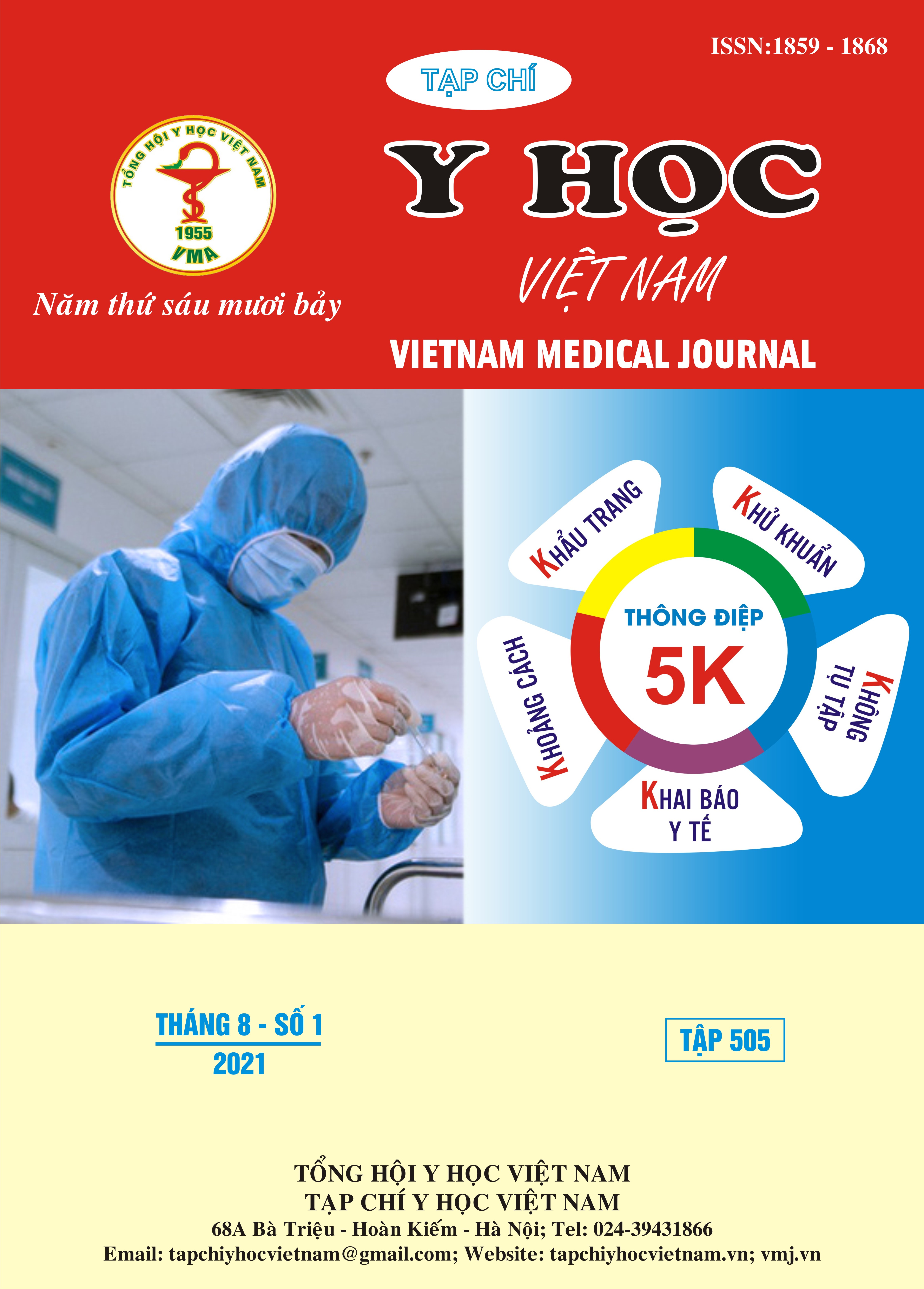THE STUDY OF HISTOPATHOLOGICAL VARIANTS’ RATE OF PAPILLARY THYROID CARCINOMA ACCORDING TO WORLD HEALTH ORGANIZATION’S CLASSSIFICATION IN 2017
Main Article Content
Abstract
The study of histopathological variants’ rate of papillary thyroid carcinoma is according to World Health Organization’s classification in 2017. Objective: Determine the variants’rate of papillary thyroid carcinoma. Subjects:Includes 99 patients with diagnosis of papillary thyroid carcinoma, who had total thyroidectomy and lymph node dissectionfrom 01/2019 to 01/2021 in Viet Nam National Cancer Hospital, Tan Trieu campus. Sampling was purposive and took all cases. Research methods: The cross-sectional descriptive study was done. All research cases had full enough information about age, gender, tumor site, gross after surgery. The suspicious cases in HE were stained by immunohistochemistry to dertermine the orgin and/or tumor subtypes. Results and conclusion: The disease’s average-age was 37,5 ± 14,9 years old, the rate of women/men was 7,3/1;tumors were usually in the right robe with 43,4%. 10/15 variants were determined and their rate as following: Conventional variant (21,2%), papillary microcarcinoma (17,2%), diffuse sclerosing variant (16,2%), tall cell variant (16,2 %), encapsulated variant (11,1%), follicular variant (9,1%), oncocytic variant (6,0%) and 1 % other variants with cribriform – morular variant, warthin-like variant and solid variant. All research results were compared and discussed.
Article Details
Keywords
histopathological, variant, papillary thyroid carcinoma
References
2. Lloyd RV, Osamura RY, Klöppel G, et al (2017). WHO Classification of Tumours of Endocrine Organs, Lyon, 10,
3. Song E, Jeon M J, Oh H S, et al (2018). "Do aggressive variants of papillary thyroid carcinoma have worse clinical outcome than classic papillary thyroid carcinoma?". Eur J Endocrinol, 179 (3), 135-142.
4. Trần Ngọc Dũng (2012). Nghiên cứu phân loại mô bệnh học và giá trị của hóa mô miễn dịch trong chẩn đoán ung thư biểu mô tuyến giáp. Luận văn Tiến sỹ y học: Trường Đại học Y Hà Nội.
5. Đinh Xuân Cường (2010). Nghiên cứu đặc điểm lâm sàng, mô bệnh học và kết quả điều trị giải phẫu bệnh ung thư tuyến giáp tại bệnh viện K. Luận văn Thạc sỹ y học. Hà Nội: Trường Đại học Y Hà Nội.
6. Phạm Duy Đạt (2019). Nghiên cứu đặc điểm giải phẫu bệnh và bộc lộ BRAF V600E bằng hóa mô miễn dịch trong ung thư biểu mô nhú tuyến giáp. Luận văn Bác sĩ chuyên khoa II. Hà Nội: Đại học Y Hà Nội.
7. Chereau N, Giudicelli X, Pattou F, et al (2016). "Diffuse Sclerosing Variant of Papillary Thyroid Carcinoma Is Associated With Aggressive Histopathological Features and a Poor Outcome: Results of a Large Multicentric Study". J Clin Endocrinol Metab, 101 (12), 4603-4610.
8. Carr A A, Yen T W F, Ortiz D I, et al (2018). "Patients with Oncocytic Variant Papillary Thyroid Carcinoma Have a Similar Prognosis to Matched Classical Papillary Thyroid Carcinoma Controls". Thyroid, 28 (11), 1462-1467.


